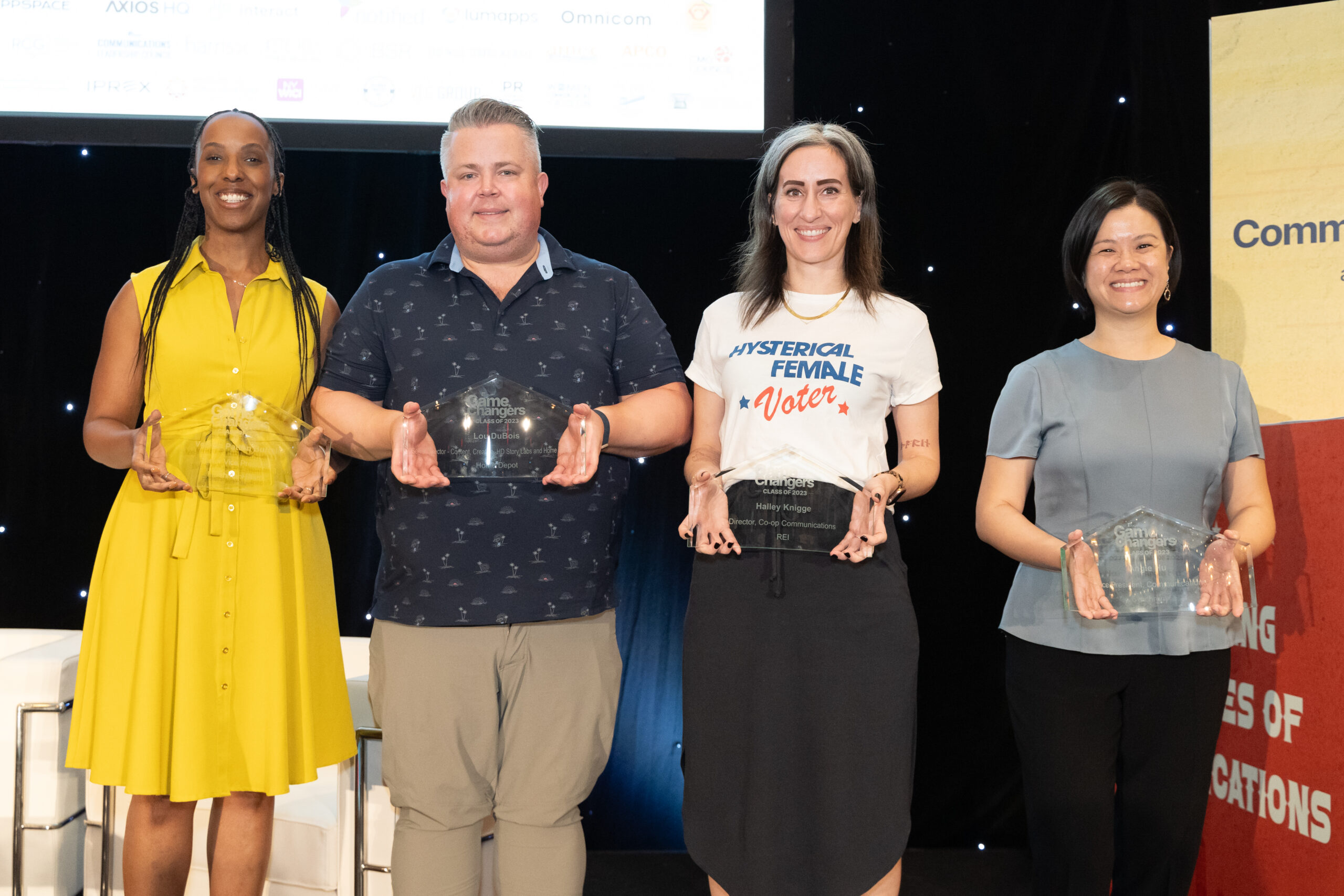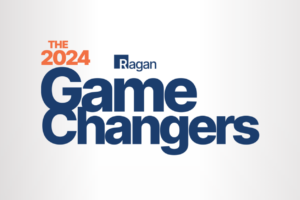Ragan’s Game Changers on the future of crisis management and employee engagement
Insights from four Game Changer winners from Ragan’s Future of Communications Conference.

Ragan’s Communications Week 2023 honored the inaugural class of Game Changers, sponsored by Omnicom. These leaders were nominated by members of Ragan’s Communications Week advisory council and carefully selected by our editorial team as emblems of innovation in the industry.
During the Future of Communications Conference in Austin this week, Ragan Content Director Jess Zafarris held panel conversations with a few Game Changers to learn how they’re preparing for the future of crisis communications and employee engagement.
Here’s what we learned.
The future of crisis communications is people-first
Veleisa Patton Burrell, senior director of PR and crisis at Denny’s Corporation, remembered how working DE&I comms during a past agency role taught her to balance logistics alongside emotional lift. Crisis is now in her title, a 24/7 international effort that requires delicate considerations for Denny’s many franchisees.
Asked what tips she has for comms to prepare for crisis over the next few years, Patton Burrell stressed the importance of taking a step back and remembering not everything is a crisis.
“We need to clarify the difference between a crisis and an issue,” she said.
Of course, taking a people-first approach can help you clarify the scale of the issue. Does it affect your core stakeholders? Are employees hurting? The Israel-Hamas war has offered the latest example of a global crisis that may not merit an external response from a brand, but still deserves addressing when it affects your employee population.
“Employees are the heart of what you do,” Patton Burrell continued. “If you treat them with care, they do the same. At the end of the day people want to feel like they’re seen and like they’re heard. What that looks like depends on the company.”
For Halley Knigge, director of communications at REI, taking a people-first perspective to crisis management began when she worked in healthcare. How do you draft a crisis plan for handling a child abduction at a hospital? For addressing bomb scares? Her career continued in the airline industry, which she said provided crisis training . At REI, the crises are more reputational. Social issues come up, but the industry is less life and death.
What weighs on her mind most is about the constant deluge of global crises, as well as domestic crises like the increased incidence of mass shootings. “I worry about employees getting desensitized to it,” she said. “Do we lose our humanity because we’re so ground down?”
This informs REI’s approach to communicating with the whole employee during times of crisis, and their robust process on when to speak up. The bar is lower for speaking to employees than speaking externally — if there’s something terrible happening in the world and it’s tough to show up as their full selves, REI will message on it internally.
“We can’t fix a war, but we can check in on employees and express care, that we know there’s a lot going on right now,” Knigge said. “Every day can’t be business as usual when there are horrible things happening in the world.”
The future of employee engagement is built from the bottom up
Of course, all the empathetic and people-first messaging to employees won’t resonate if it isn’t received. Angie Hu, VP of communications at Synchrony, stressed that managers are always the gateway to reaching hourly and non-desk employees. Managers can help with pull-through by giving their direct reports quick takes and easy-to-digest info — but they can also help give their teams time back to engage with resources, attend town halls and connect with top leaders.
Cascading this information down honors the power of interpersonal employee relationships to nurture culture, too.
“Employee voices are at the heart of culture storytelling,” Hu said.
This should also manifest when talking about other aspects of your employee value proposition, like having employees provide examples of how your company’s benefits affect them outside of the office.
Lou Dubois, senior Director and head of Content, Creative & HDTV at The Home Depot, agreed. “Brands are so much more than what you sell, it’s who you are and who your employees are,” he said. “Culture can’t be forced, they have to be built from the bottom up.”
That often means trying new things. At Synchrony, virtual reality helps employees “see” the campus before visiting IRL, reducing anxiety and making the transition to in-person less uncomfortable.
Hu stressed that communicators can simultaneously embrace emerging tech without taking the human element out of the employee experience.
“The skills that communicators have around the basics – writing, relationship building, curiosity – we’re not going to have all the answers, especially with technology changing so quickly,” she said. “But having that empathy and the soft skills are just as important.”
Justin Joffe is the editorial director and editor-in-chief at Ragan Communications. Before joining Ragan, Joffe worked as a freelance journalist and communications writer specializing in the arts and culture, media and technology, PR and ad tech beats. His writing has appeared in several publications including Vulture, Newsweek, Vice, Relix, Flaunt, and many more.







